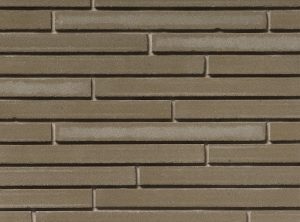Protecting Brick for the Long Haul with a Complete Guide to Masonry Maintenance
Brick has long been celebrated for its strength, beauty, and timeless appeal. From stately homes to historic landmarks, brick masonry brings durability and architectural charm to structures across the world. But even the most enduring materials need a little upkeep to maintain their performance and appearance. That’s where routine maintenance and thoughtful inspections come in. In this article, we’ll explore why taking care of your brickwork matters, what to look for during inspections, and how to handle common repairs—from mortar touch-ups to ivy removal.
Why Brick Maintenance Matters
Brickwork is famously long-lasting—properly constructed brick walls can stand strong for 100 years or more. But weather, moisture, and time can take a toll, especially on components like mortar joints, flashing, and sealants. A small crack or clogged weep hole today could become a bigger moisture problem tomorrow. That’s why preventative care is key: regular inspections and timely repairs can save building owners from costly structural damage in the future.
The Inspection Routine
Inspecting brick masonry shouldn’t be a once-in-a-decade affair. Ideally, building exteriors should be assessed seasonally or at least annually. Use binoculars or access upper floors from balconies or rooftops to get a close look at hard-to-reach areas. Pay special attention to walls with visible water stains, cracks, or plant growth. For thorough documentation, photos and notes on building plans or elevation drawings can help track changes over time.
A helpful tool during inspections is a checklist of common problem areas—cracks, spalling bricks, deteriorated mortar, clogged weep holes, damaged flashing, or torn sealants. Document any moisture signs indoors as well, such as stained ceilings or bubbling paint, which may indicate water seeping through the masonry.
Addressing Moisture and Efflorescence
One of the most common concerns in brick maintenance is moisture infiltration. Before tackling surface stains or applying sealants, it’s essential to identify and fix the source of the leak. Water can seep in through cracks in mortar, gaps around windows, missing weeps, or deteriorated flashing. Persistent white deposits (efflorescence) on bricks are a clue that water is traveling through the masonry, leaving salts behind.
Efflorescence is often harmless and can be removed with a stiff brush and clean water. For stubborn areas, use a specialty brick cleaner. But don’t ignore the root cause—check for leaks or clogged weeps before cleaning, or the stains will return.
Fixing Mortar Joints: Repointing and Grouting
Mortar is the glue that holds brickwork together, and over time, it can crumble, crack, or wear away. Small surface cracks may be repaired by face grouting, but more significant deterioration calls for repointing—a process where old mortar is removed and replaced with new.
Repointing should be done carefully and precisely. The new mortar must match the original in strength, color, and texture. Using a mortar that’s too strong can actually damage the surrounding bricks, leading to spalling or cracking. Always prehydrate repointing mortar and install it in layers no thicker than ¼ inch, tooling the joint when it’s firm enough to hold a thumbprint.
Replacing Damaged Bricks
Bricks that are chipped, broken, or severely spalled may need full replacement. The process involves removing the damaged brick, cleaning the opening, and buttering new bricks with matching mortar. The goal is to match the appearance and physical properties of the original brickwork as closely as possible. Use a sample panel to test your match before installation.
Handling Ivy and Other Plant Growth
Though picturesque, ivy can spell trouble for brickwork. Vines can trap moisture, burrow into mortar joints, and accelerate deterioration. If ivy is growing on your walls, don’t rip it down. Cut the vines and let the remaining growth dry out naturally over two to three weeks. Once dry, it can be safely brushed off with detergent and a stiff fiber brush. Avoid using chemicals or acids, which can stain or damage brick.
Opening or Installing Weep Holes
Weep holes are small but critical features that allow water to drain from behind brick walls. If they’re missing or blocked, water may build up and cause damage. During maintenance, ensure existing weeps are open and unobstructed. If needed, new ones can be drilled, but care must be taken not to damage the underlying flashing.
Solving Rising Damp with Dampproofing
Moisture from the ground can slowly rise through bricks by capillary action—a problem known as rising damp. This issue can often be solved by inserting a dampproof course above ground level. Options include injecting a chemical barrier or removing a brick course to install flashing. For severe cases, digging around the base of the wall and applying an exterior waterproofing layer may be necessary.
Flashing and Anchors: Hidden Heroes
Flashings direct water away from vulnerable areas in masonry, such as windows, doors, and foundations. If flashing is missing or failing, it should be replaced in sections to avoid damaging surrounding bricks. Similarly, wall ties and anchors ensure structural stability. If they’re missing or corroded, retrofit systems using mechanical anchors or adhesives can restore integrity.
Are Coatings or Sealants a Good Idea?
While it might be tempting to apply a water-repellent coating to protect brick, it’s not always the right move. Properly designed and maintained brickwork typically doesn’t need sealants. In some cases—like exposed chimneys or older barrier walls—breathable water repellents can help reduce absorption. But these should never replace proper flashing, weeps, and repairs.
Be Proactive, Not Reactive
Regular maintenance is the secret to keeping your brickwork beautiful, safe, and long-lasting. With simple seasonal inspections and well-timed repairs, you can prevent moisture damage, preserve your structure’s value, and maintain the charm of your brick exterior for decades to come.
When in doubt, it’s always smart to consult a design or structural professional, especially if cracks or issues seem complex. But with the right care and attention, your brick building will stand tall and proud for generations.

